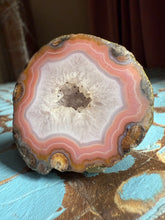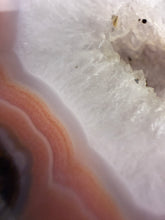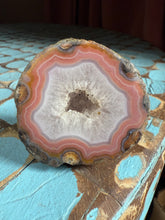
Agate from Middle-Class Mines in China: A Gemstone of Cultural and Economic Significance
Agate, a form of chalcedony composed primarily of microcrystalline quartz, has long been revered for its vibrant colors and intricate patterns. While Brazil and Uruguay are traditionally known as major agate sources, China has emerged as a significant player in the global agate market. Particularly, middle-class mines in provinces such as Liaoning, Xinjiang, and Inner Mongolia have contributed to both the domestic and international supply of this semiprecious stone. These mines, though not as large-scale or industrialized as top-tier operations, represent a crucial intersection of artisanal mining, local economic development, and the preservation of cultural heritage.
Geographical Context and Mining Practices
In China, middle-class agate mines are typically small to medium in scale, often family-owned or managed by local cooperatives. Liaoning Province, especially the city of Chaoyang, is among the most well-known agate-producing regions. Mines here extract agate from sedimentary and volcanic rock formations through relatively low-tech methods, relying on a combination of manual labor and simple machinery. While these operations lack the capital and infrastructure of state-owned or large private enterprises, they are crucial in sustaining the livelihoods of thousands of workers and artisans.
The working conditions in middle-class mines vary widely, but many adhere to improved safety and environmental standards compared to informal or illegal operations. Nonetheless, challenges such as inconsistent regulation enforcement, limited access to advanced equipment, and market volatility continue to affect the sustainability of these mines.
Economic and Social Impact
Middle-class agate mines play a pivotal role in the local economies of rural and semi-urban Chinese communities. They offer employment not just in mining but also in processing, carving, and selling the agate. Chinese artisans have a long history of carving agate into jewelry, ornaments, religious figurines, and even functional items such as ink stones and brush washers. The agate industry, therefore, supports a wide value chain that extends from raw material extraction to finished artisanal goods.
Local markets and small export businesses benefit from the steady output of agate, which is often sold in domestic gem fairs and online platforms like Alibaba and Taobao. In recent years, increased interest in wellness and spirituality has driven demand for agate products, further bolstering small- to medium-scale producers.
Cultural Relevance
Agate holds a special place in Chinese tradition. Known as “玛瑙” (mǎnǎo), it has been used in China since at least the Han Dynasty. Historically, it was associated with protection, vitality, and spiritual balance. Today, many believe that wearing agate can calm the mind and bring inner peace, aligning with the principles of traditional Chinese medicine and feng shui.
The craftsmanship associated with agate is also a point of cultural pride. In regions like Chaoyang, entire communities are involved in the agate industry, and local festivals often showcase agate carving competitions and exhibitions. These cultural dimensions imbue the stone with significance beyond its monetary value, connecting modern-day miners and artisans to a long-standing legacy.
Challenges and Sustainability
Despite their contributions, middle-class agate mines in China face significant challenges. Depleting reserves, rising labor costs, and increasing environmental scrutiny are pressing concerns. Unlike larger firms, these mines often lack the financial resources to invest in sustainable mining technologies or to navigate complex regulatory frameworks. In response, some mines are forming cooperatives or partnering with academic institutions to explore better extraction and processing methods.
Moreover, as the Chinese government promotes green development and tightens environmental regulations, middle-class miners must adapt or risk closure. This transition period presents both a threat and an opportunity—those who innovate and invest in cleaner technologies could gain a competitive edge in the evolving gemstone market.
Conclusion
Agate from China’s middle-class mines embodies a unique combination of natural beauty, cultural richness, and socio-economic importance. While not as industrialized as large-scale operations, these mines are deeply embedded in local communities, providing employment, preserving artisanal traditions, and contributing to regional economies. As global interest in ethically sourced and culturally significant gemstones grows, the future of these mines will depend on their ability to modernize responsibly while honoring their deep-rooted heritage.











